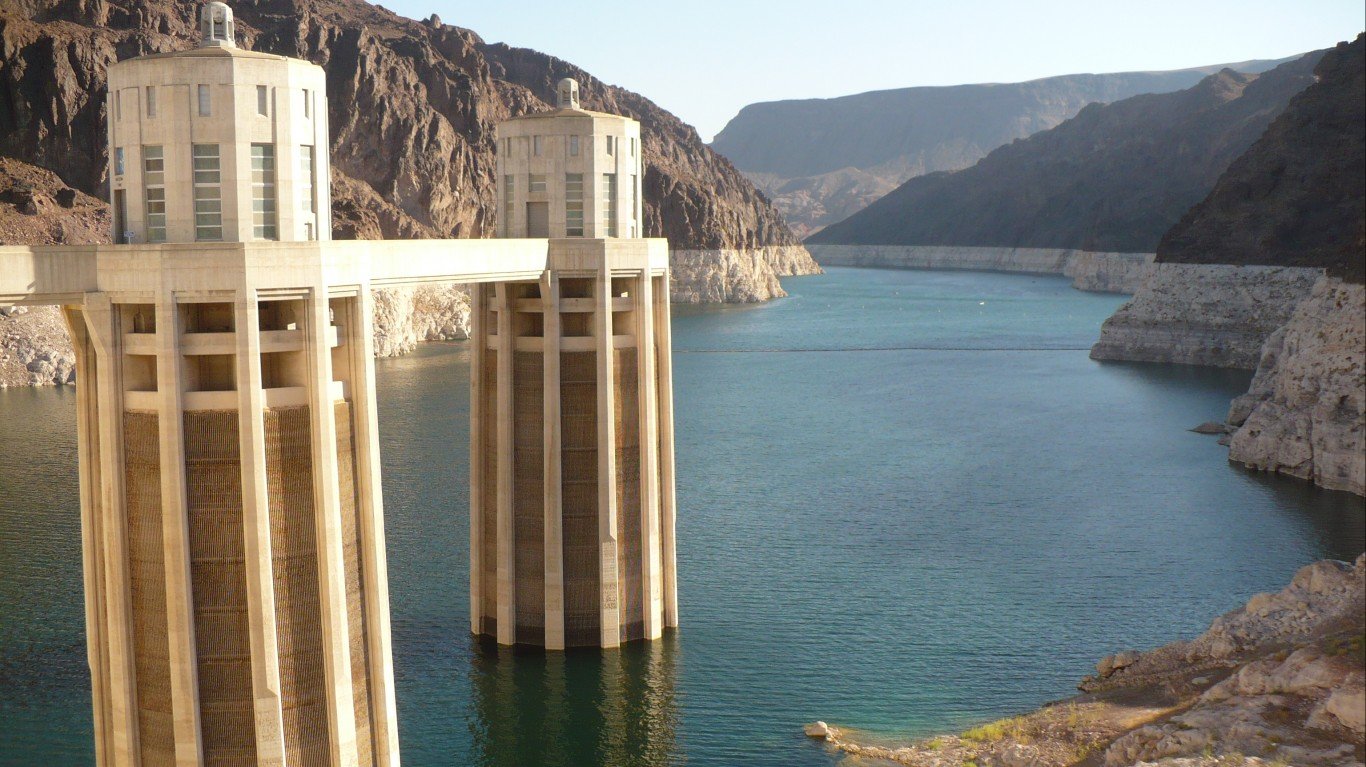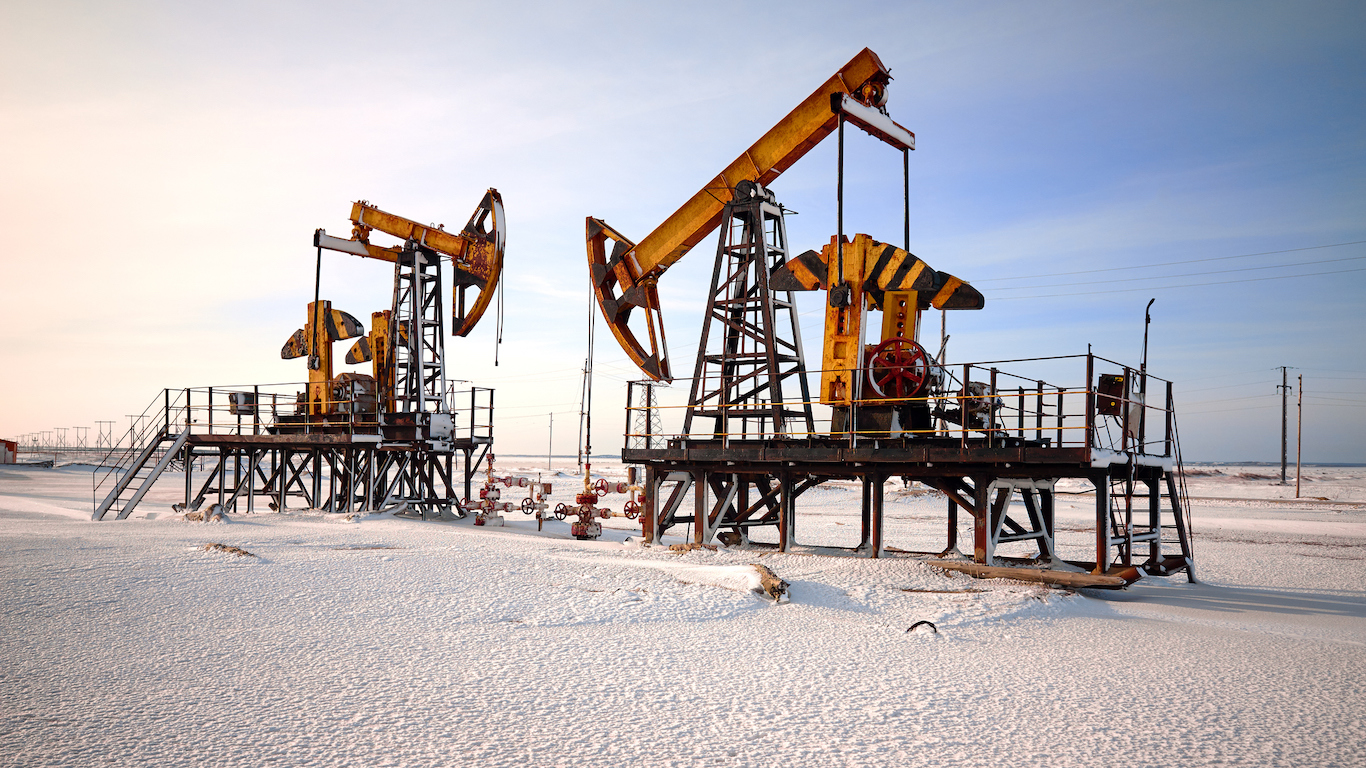
9. Worsening water scarcity
Continued severe drought in 2022 caused water levels to recede and worsened the food crisis in Africa. In Europe and Asia, too, as rivers dried up, trade was affected. In the Western U.S., drought led to water usage cutbacks. 2023 is forecast to be yet another dry year, with river levels hitting new lows and conflicts over access to water flaring up in the Middle East and Africa. Countries are unequipped to manage the problem, according to Eurasia Group, and policy makers will likely employ short-term emergency measures that will prove woefully inadequate.
In the United States, the problem extends back decades. Lake Mead, a reservoir in Nevada and Arizona, formed by the damming of the Colorado River, has lost about 170 feet of water level since 2000. Due to the ongoing megadrought in the West, decisions will have to be made about water allocation, including to farmers. Some farmers may be paid to forgo the year’s harvest for the sake of water conservation in 2023.
In Europe, Norway may have to reduce hydroelectricity exports, putting stress on its relationships with Netherlands and Germany, and low water levels in the Rhine and Po rivers may hamper inland shipping and reduce economic activity.

8. Political polarization in the United States
For most Americans, and much of the world, the 2022 midterm election results were a reason for optimism, as all candidates for governor and secretary of state who denied the legitimacy of President Joe Biden’s 2020 electoral victory were defeated. Still, many others were elected to Congress and other state positions, and it bears pointing out that the U.S. remains among the most politically polarized and dysfunctional advanced democracies in the world.
According to a recent poll conducted by the Pew Research Center, 62% of Republicans have a “very unfavorable” view of Democrats, and 54% of Democrats have a similarly negative view of Republicans. Such polarization has reduced the efficiency of the federal government, and state governments are stepping in to fill the void. This diversion undermines the viability of the U.S. as a long-term investment for both domestic and international business and reveals the real and growing threat of political violence.

7. Deceleration in global development
The last two generations have been marked by an exceptional acceleration of global development. Over a billion people have escaped extreme poverty, infant mortality fell, life expectancy rose, and from 1998 to 2021, the global economy tripled in size. With the onset of the COVID-19 pandemic, in addition to Russia’s war in Ukraine and surging inflation, progress has stalled and even reversed course, and that trend will likely continue into 2023, according to Eurasia Group.
Five years of human development were lost during the pandemic, according to U.N. estimates. Life expectancy in the U.S. fell for the second year in a row in 2021, according to the Centers for Disease Control and Prevention, and over 90% of countries reported a decline in human development in 2020 or 2021. Inflation will continue to slow global economic growth, while the war in Ukraine will increase food insecurity in much of the world. The ranks of the global middle class will continue to contract as more people are pushed into extreme poverty.
These factors will disproportionately impact women and girls around the world, continuing to lose rights as gender equality moves back instead of forward. More women will be pushed from the labor market and into the informal economy and more girls taken out of schools and into forced marriages.

6. Tightening energy market
In the wake of Russia’s invasion of Ukraine, sanctions on Russian oil sent energy prices soaring in much of Europe and the United States, and though prices have come down from 2022 highs, they will not likely remain low in 2023, according to Eurasia Group. Several factors, including reduced oil supply from OPEC+ countries, and growing demand from China as zero-COVID policies are removed, will likely drive oil prices up to over $100 a barrel once again in 2023.
Meanwhile, EU countries, cut off from Russian energy, will be investing in liquid natural gas storage infrastructure, and new competition for LNG will drive up global prices. Surging energy prices will raise the risk of power outages in Europe and likely exacerbate tensions between the U.S. and Gulf nations and increase tensions between developed countries and developing economies, which will suffer the most from sanctions on Russian energy.

5. Growing tensions between Iran and the West
Since the killing of Mahsa Amini by the so-called Morality Police in Iran in September 2022, there have been nationwide anti-government protests, which have continued into 2023. These protests pose the most significant domestic threat to the Islamic regime since its formation in 1979. In response, the Iranian government has used violence to suppress the uprising, and authorities have killed over 500 protestors.
Facing a legitimacy crisis at home, Iran is also becoming more isolated internationally. Tehran has escalated its nuclear program, and is now reportedly capable of producing enough material for a nuclear weapon in a matter of weeks, all but killing any hope of a nuclear agreement with the U.S. and Western allies and increasing the likelihood of a conflict with Israel, according to Eurasia Group.
Iran is also providing material support for Russia’s invasion of Ukraine, selling hundreds of drones and ballistic missiles to Moscow.





